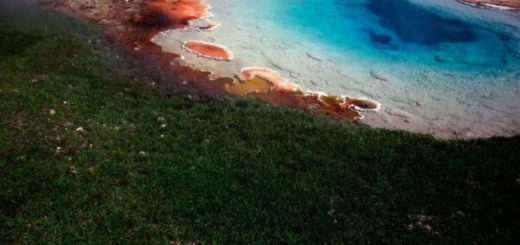Ancient Greek Grave Hides Golden Skeleton

ATHENS, Greece – Greek archaeologists have found an ancient skeleton covered with gold foil in a grave on the island of Crete, officials said Tuesday.
Excavator Nicholas Stampolidis said his team discovered more than 3,000 pieces of gold foil in the 7th-century B.C. twin grave near the ancient town of Eleutherna.
Cemeteries there have produced a wealth of outstanding artifacts in recent years.
The tiny gold ornaments, from 1 to 4 centimeters (0.4 to 1.5 inches) long, had been sewn onto a lavish robe or shroud that initially wrapped the body of a woman and has almost completely rotted away but for a few off-white threads.
“The whole length of the (grave) was covered with small pieces of gold foil — square, circular and lozenge-shaped,” Stampolidis told The Associated Press. “We were literally digging up gold interspersed with earth, not earth with some gold in it.”
The woman, who presumably had a high social or religious status, was buried with a second skeleton in a large jar sealed with a stone slab weighing more than half a ton. It was hidden behind a false wall, to confuse grave robbers.
Experts are trying to determine the other skeleton’s sex.
The grave also contained a copper bowl; pottery; perfume bottles imported from Egypt or Syria and Palestine; hundreds of amber, rock crystal and faience beads; as well as a gold pendant in the form of a bee goddess that probably was part of a rock crystal and gold necklace.
“If you look at it one way up, it’s shaped like a lily,” said Stampolidis, a professor of archaeology at the University of Crete who has worked at Eleutherna for the 25 years. “Turned upside down, you see a female figure holding her breasts, whose lower body is shaped as a bee with wings. The workmanship is exquisite.”
The ruins of Eleutherna stand on the northern foothills of Mount Ida — the mythical birthplace of Zeus, chief of the ancient Greek gods. Past excavations have discovered a citadel, homes and an important cemetery with lavish female burials.
The town flourished from the 9th century B.C. — the dark ages of Greek archaeology that followed the fall of Crete’s great Minoan palatial culture — and endured until the Middle Ages.



 Creators of mankind
Creators of mankind Description of “Tall white aliens”
Description of “Tall white aliens” Where they came from?
Where they came from? About hostile civilizations
About hostile civilizations The war for the Earth
The war for the Earth “Tall white aliens” about eternal life
“Tall white aliens” about eternal life Video: “Nordic aliens”
Video: “Nordic aliens” Aliens
Aliens Alien encounters
Alien encounters The aliens base
The aliens base UFO
UFO Technology UFO
Technology UFO Underground civilization
Underground civilization Ancient alien artifacts
Ancient alien artifacts Military and UFO
Military and UFO Mysteries and hypotheses
Mysteries and hypotheses Scientific facts
Scientific facts


















